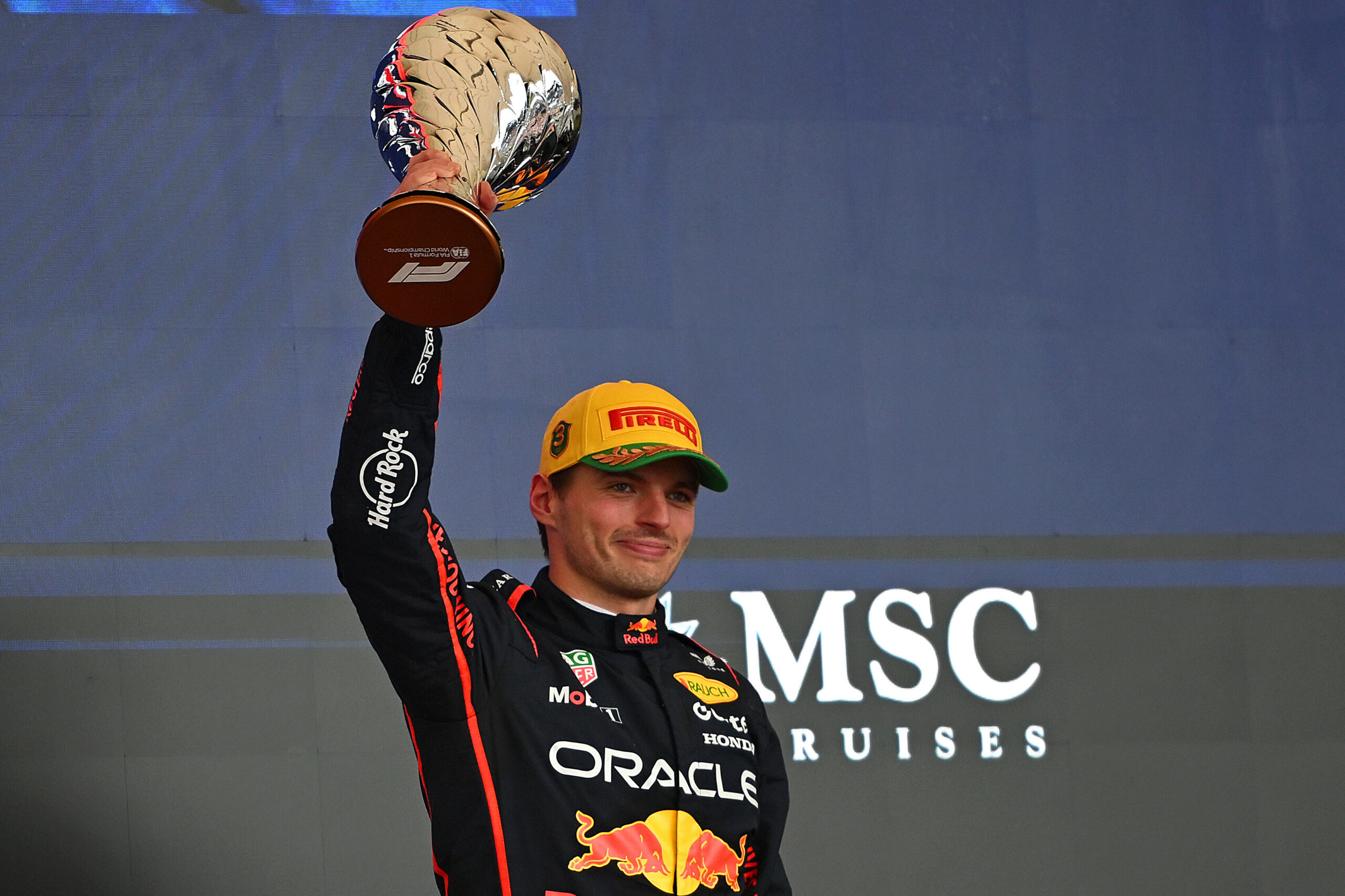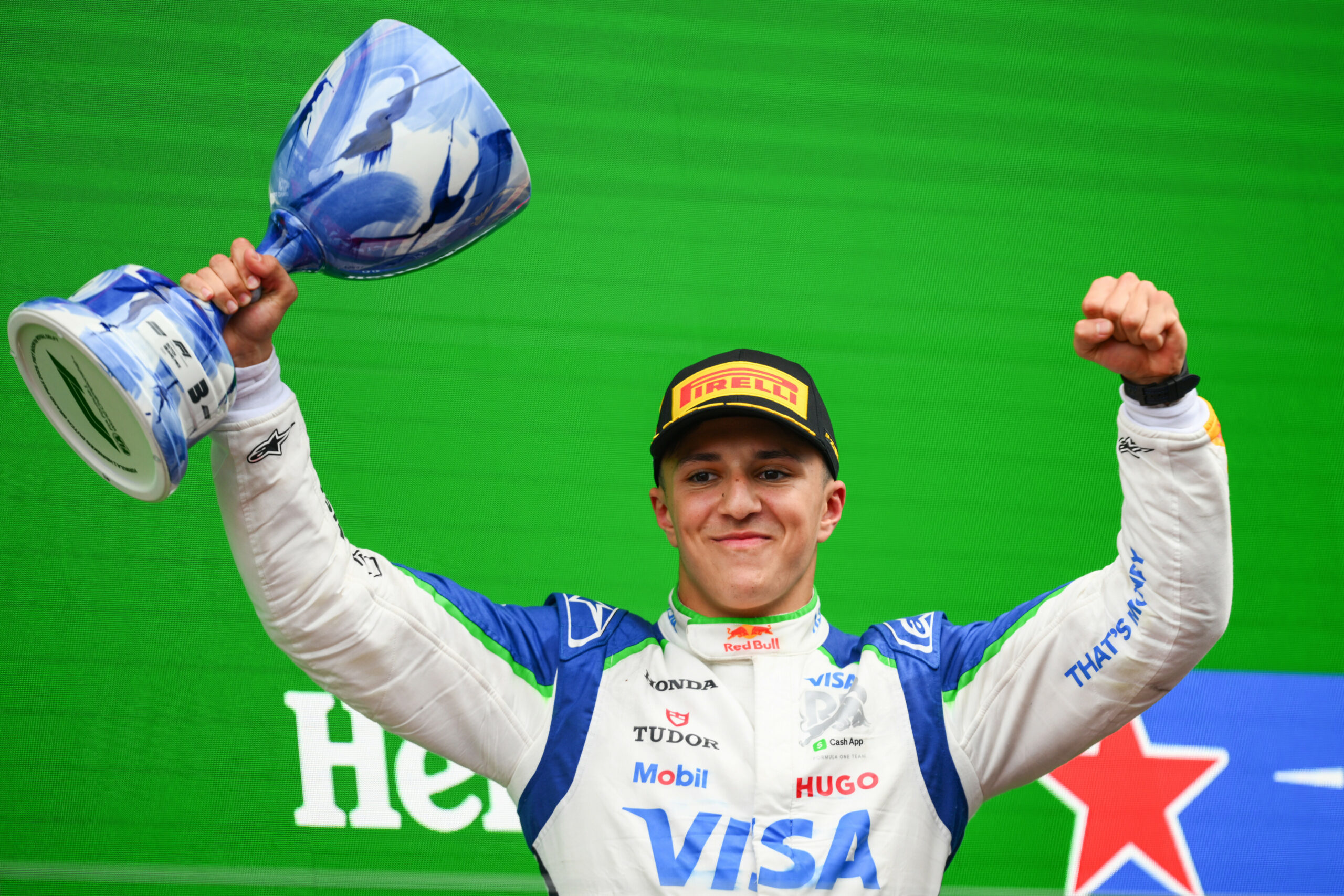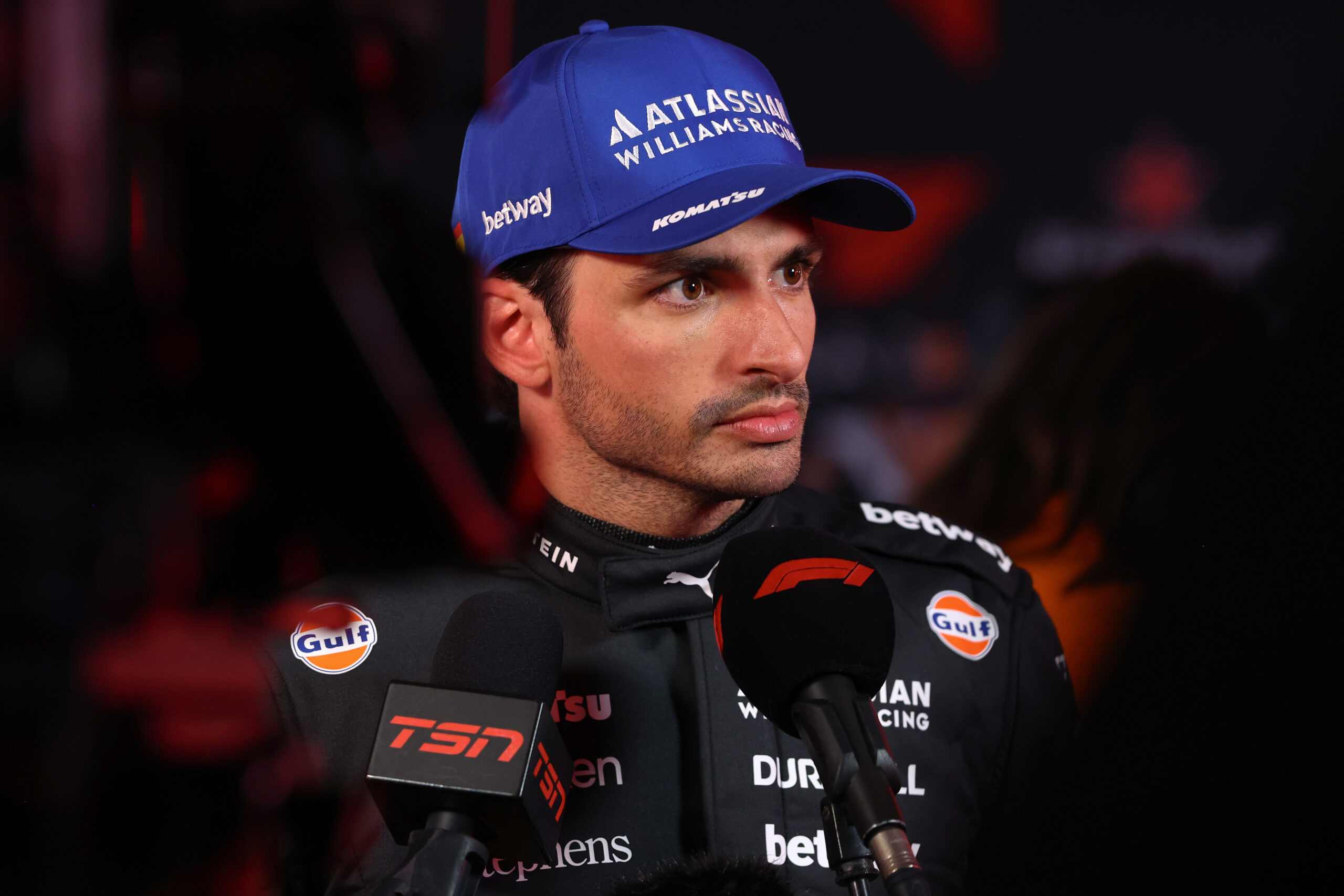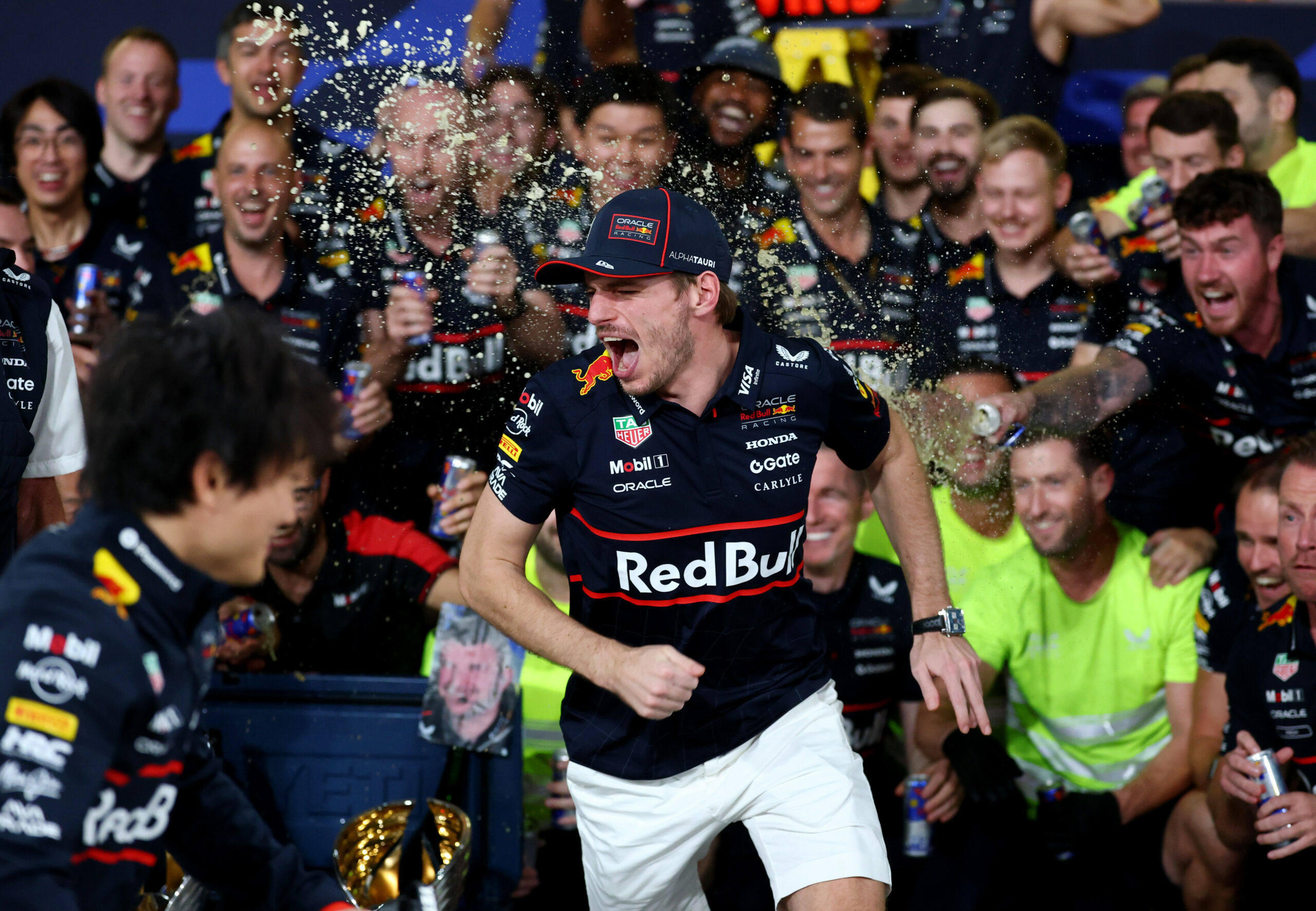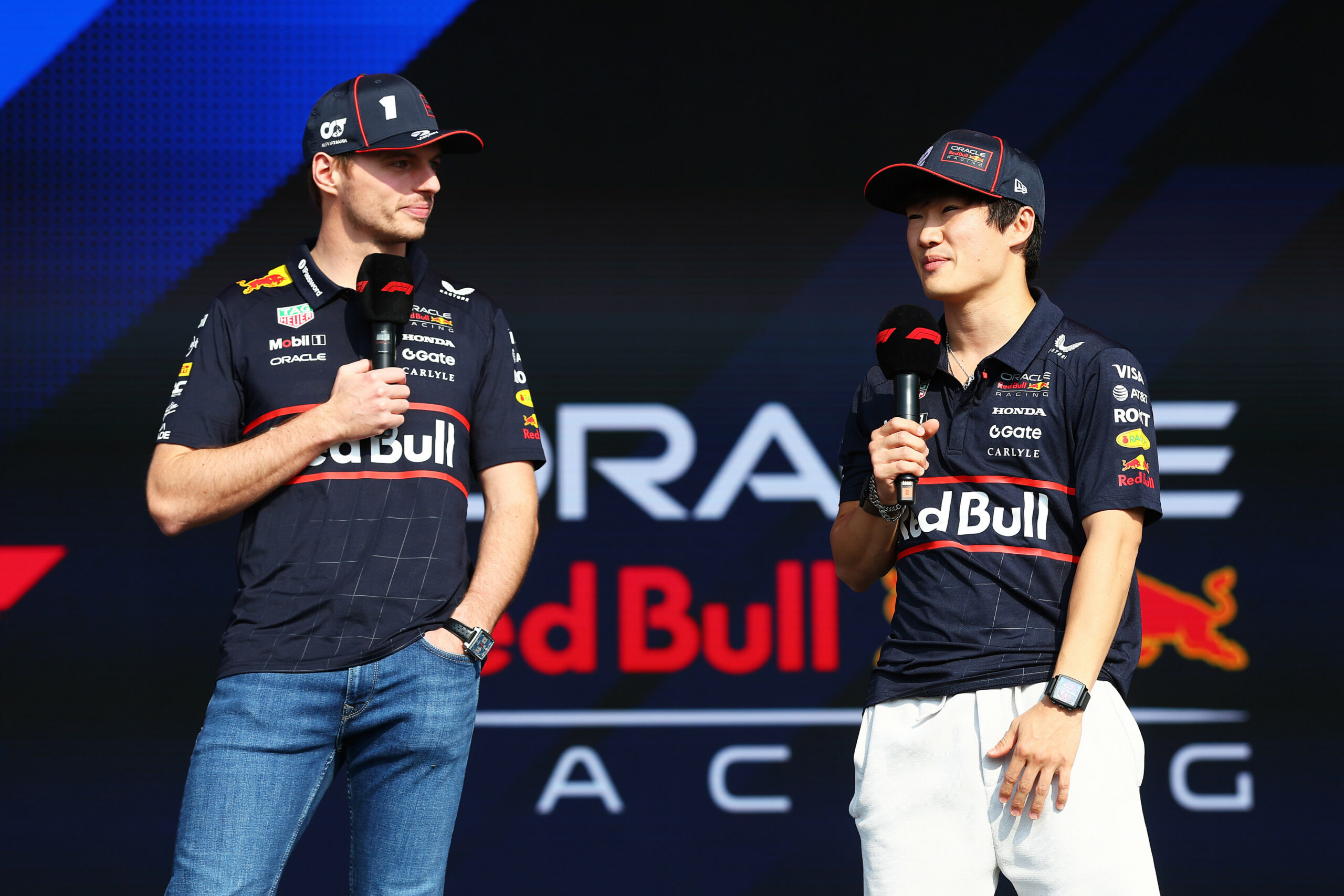After a disastrous Qualifying that saw Max Verstappen eliminated in Q1, few could have imagined that the reigning world champion would end Sunday’s 2025 F1 São Paulo GP on the podium without a miracle. Yet, from the pitlane to P3, Verstappen produced a relentless and tactical recovery drive that showcased both his composure and Red Bull’s race-day strength. Starting from the pitlane alongside Haas’ Esteban Ocon, Verstappen faced a daunting challenge: a 71-lap charge through a field filled with DRS trains, changing track conditions, and a puncture on lap one that forced an early stop. What followed was a display of calculated aggression, adaptability, and team strategy at its finest.
Relentless charge through the chaos
In typical Verstappen fashion, the Dutchman wasted no time getting to work once the lights went out. Even after his early setback, he refused to let the race slip away, cutting through the field with precision and persistence.
“Yeah, I think the race was quite full on – a lot of action. I had to overtake some cars, of course, coming from the pit lane. And I think our pace was quite strong over all the stints, of course sometimes it’s a bit difficult to know fully with traffic and stuff. But yeah, I mean, to be on the podium from the pit lane, I didn’t expect that at all – even with a puncture as well in the beginning of the race, that’s why we had to box again.”
The early puncture could easily have ruined his day, but Verstappen kept his composure. He methodically worked through the field again, using the car’s improved balance and tyre life to claw back positions.
“So yeah, incredible result for us. Very happy with that and just very proud of everyone within the team as well. I mean, yesterday was very tough for us, but, you know, we never give up. We always try to improve and try to find more lap time. And luckily, we found that again today.”
That determination defined Verstappen’s race. Each overtake required balance—push too hard and risk it all, hesitate and lose the chance.
“Yeah, I mean, you’re just trying to pass as fast as possible as well, because you don’t want to lose too much time. But then some cars are also in a DRS train, so it was not always very straightforward. But I mean, with all that, to finish only like 10 seconds from the lead, I think for us is incredible.”
A complete turnaround
Qualifying had been a disaster for Red Bull, but Sunday told a completely different story. Verstappen and his engineers found something overnight that transformed the car into a competitive weapon again. Cooler temperatures also played into their hands, allowing him to manage tyre degradation better than most.
“Yeah, I mean, miles better than our Qualifying, that’s for sure. Just a very strong race. I think we had much better pace. I think it was a bit colder today, which maybe helped us. The car just felt a bit more responsive. Even with the puncture that I picked up on the Hard, to then drop back to last and come through the field again on the Mediums—I think we did the right strategy at the end.”
“Even on the Soft, it seemed like it was OK. Just when you start getting close and I passed George, you already wear your tyres a bit. And then when I was getting close to Kimi, the tyres just started to overheat, and you lose a lot of grip. The Soft is a bit more difficult than the Medium for that.”
“But overall, a super strong race. Coming from the pit lane to the podium, 10, 11 seconds off the lead—I think for us it’s a very strong result and definitely didn’t expect that waking up this morning.”
Despite the late tyre drop-off, Verstappen managed to fend off the charging pack and challenged Mecedes’ Kimi Antonelli for second. The result underscored just how effective Red Bull’s overnight adjustments had been.
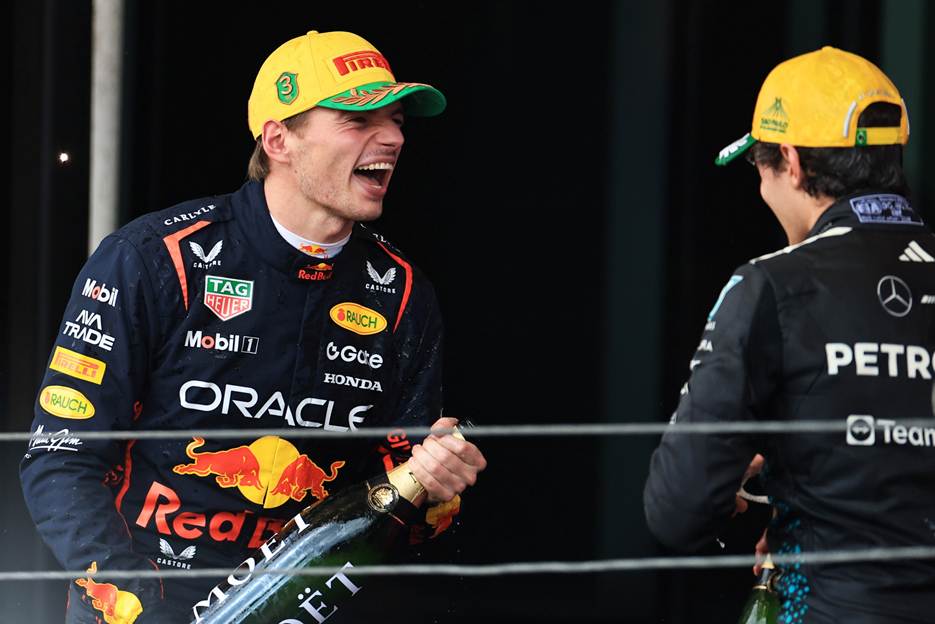
Set-up and conditions key to recovery
When asked what turned the car around, Verstappen credited both mechanical and environmental factors. The combination of an improved setup and cooler track temperatures gave the car back its bite.
“I think everything together—set-up as well. I just felt a bit happier. And then I think also the temperatures today, a bit cooler, just felt like everything was working a bit better.”
Red Bull’s overnight changes provided a more predictable and responsive balance, something Verstappen lacked throughout qualifying. The improvements allowed him to lean on the car through corners and maximise traction, something crucial on the technical Interlagos circuit.
What might have been
Even with a podium secured, Verstappen could not help but consider what might have been if circumstances had fallen more favourably—if Saturday’s setup struggles had been avoided, or if that early puncture hadn’t derailed his opening stint.
“Definitely better than P16, that’s for sure,” he said when asked what might have been possible had his RB21 performed on Saturday the way it did on race day.
When pressed on what could have happened without the puncture, Verstappen remained measured. “Impossible to know. I mean, the Hard tyre—I don’t know if it was going to be a really good tyre. I felt fine on the Medium, felt fine on the Soft. On the Hard tyre—initially maybe the Medium had a bit more grip from what I could see around me. But at the same time, you’re all in dirty air, you’re just sliding around, so it’s impossible to know.”
He elaborated on how the setback shaped his recovery drive: “But for sure, it’s not ideal. To pit again, be on the Medium back in the pack fully, and then have to go all the way through the field—I think that compromised a bit that first stint on the Medium. I had to pass quite a few cars, you’re overheating tyres constantly, so that was a bit more of a difficult stint towards the end—I would say the last eight, 10 laps. But still, a very strong race for us.”
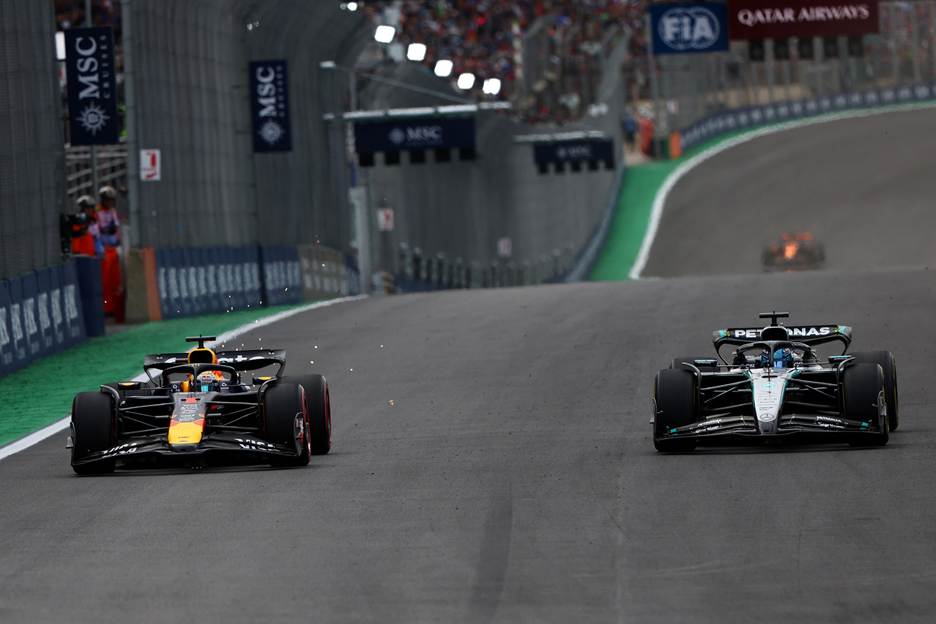
Eyes on the final stretch
With only a handful of races left in the season, Verstappen remained pragmatic when asked about his prospects for taking the 2025 F1 Championship title.
“No idea. I don’t know. I mean, look at this weekend. Look at Mexico. Then look at the races before. So, it’s really impossible to know.”
The inconsistency of recent weekends left Red Bull unsure of where they stand on pure pace. But if the 2025 F1 São Paulo GP proved anything, it is that Verstappen and his team still possess the determination to turn adversity into success.
Belief through adversity
Despite a weekend that began in frustration and confusion, Verstappen’s focus never wavered. His mindset going into Sunday was simple: improve the car, stay calm, and maximise every lap.
“Well, I mean, I jumped into the car, I was only just hoping that the car would be more competitive. But in the laps to the grid, it already felt better than the whole weekend, I would say.”
He continued, “But then still—after the start, picking up that puncture, then being last again—I was like, “My God, nothing is really going my way this weekend. But then you just settle in. You try to do the best you can: pass the cars in front of you, try to run the optimum strategy. And it all worked out.”
“With the team, we did the right thing. And then at one point, you’re fighting for that podium—you see it with 10, 12 laps to go. That’s nice. But at the same time, in the race, I’m not projecting something. I’m just focusing on the moment, trying to hit every lap as consistently as I can.”
As the race progressed, Verstappen’s pace stabilised and his communication with the team became sharper. Tyre choices and strategy were executed with precision, reflecting a driver in full control. Cooler conditions aided performance, but it was his composure and ability to reset mid-race that allowed him to turn setbacks into a strong recovery, finding rhythm amid the chaos.
“So, yeah, besides that, of course, the message is that we found a much better feeling in the car again by changing a few bits. But at the same time, it was also quite a bit colder today, and that might also have an effect.”
Turning frustration into fuel
When asked whether his poor Qualifying had fuelled his determination to extract the maximum from Sunday’s 2025 São Paulo GP, Verstappen clarified that it wasn’t about pushing harder for raw pace but rather understanding what had gone wrong and improving on it.
“Not in terms of trying to go faster, but more about just trying to understand what we were doing wrong and how we could do better for today. So yeah, you start to analyse everything you’ve done over the weekend as well and what we have done in previous weekends. We went into a direction that we thought, ‘Okay, that should be the way to go,’ and luckily, that was the right thing to do. And then I woke up and I was like, ‘Well, let’s just try to do the best we can today and try to enjoy it.’”
Verstappen treated Saturday’s disappointment not as a setback, but as a diagnostic tool, using it to fine-tune his approach for race day. His meticulous preparation, combined with his ability to reset mentally, allowed him to approach Sunday with focus and clarity. The result was a commanding recovery drive that turned a potentially demoralising weekend into a podium finish.

